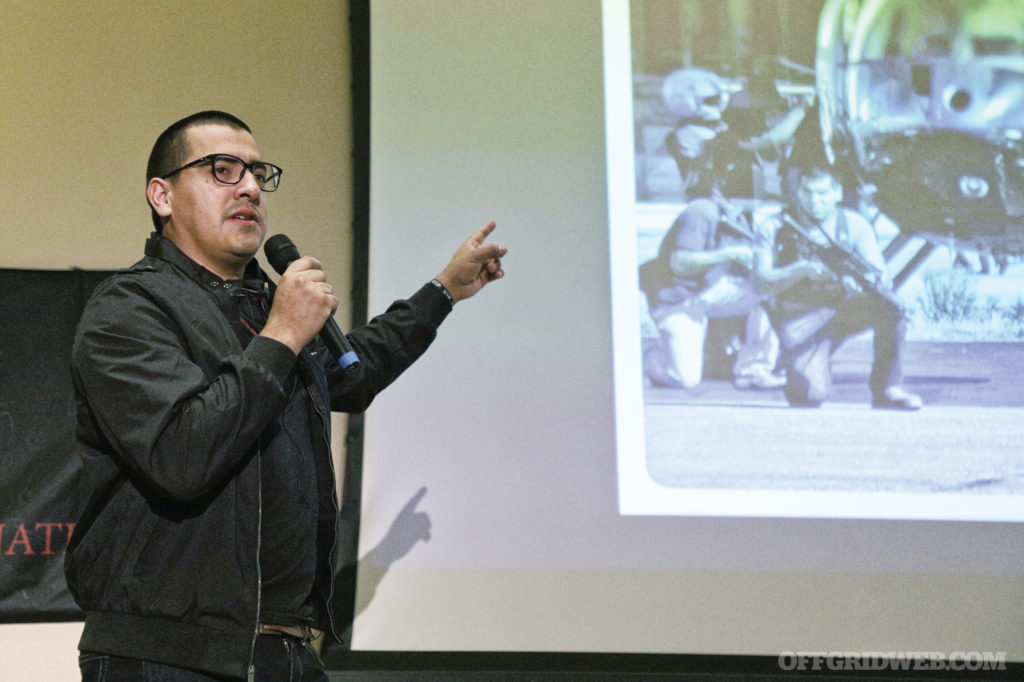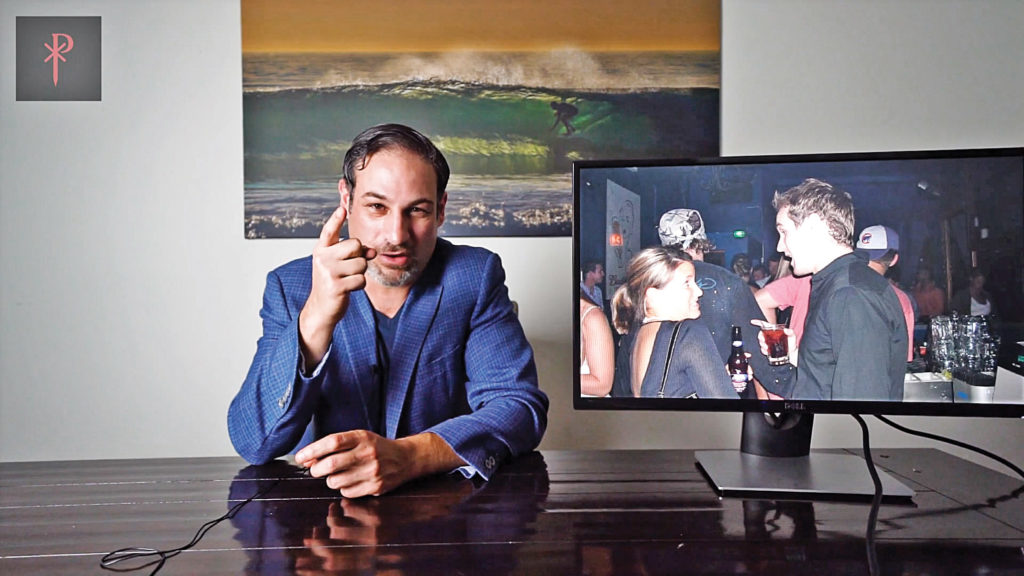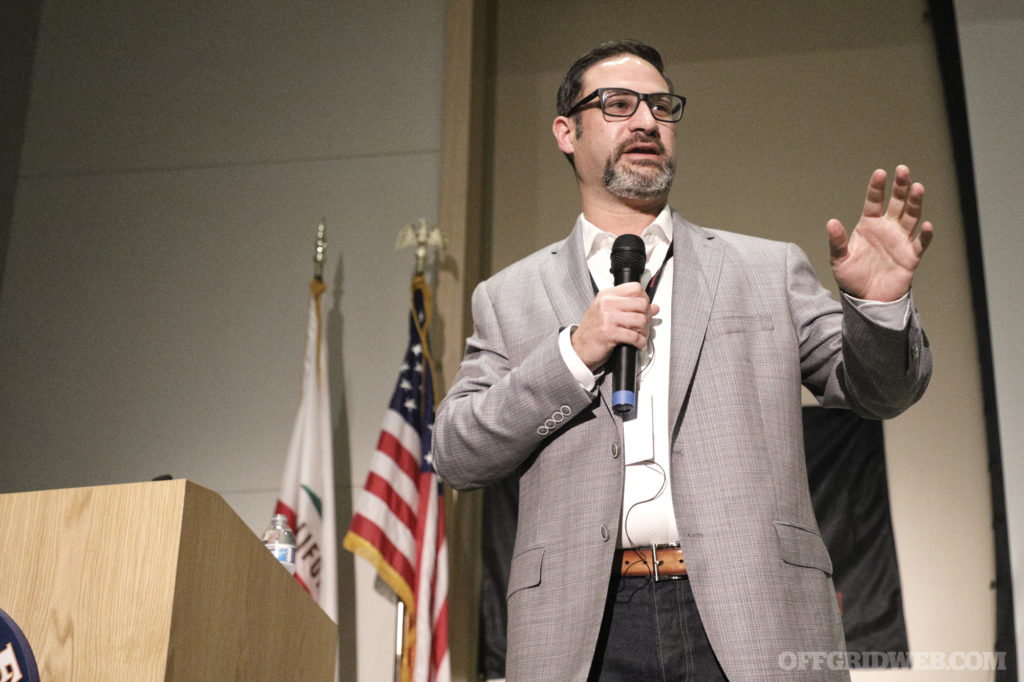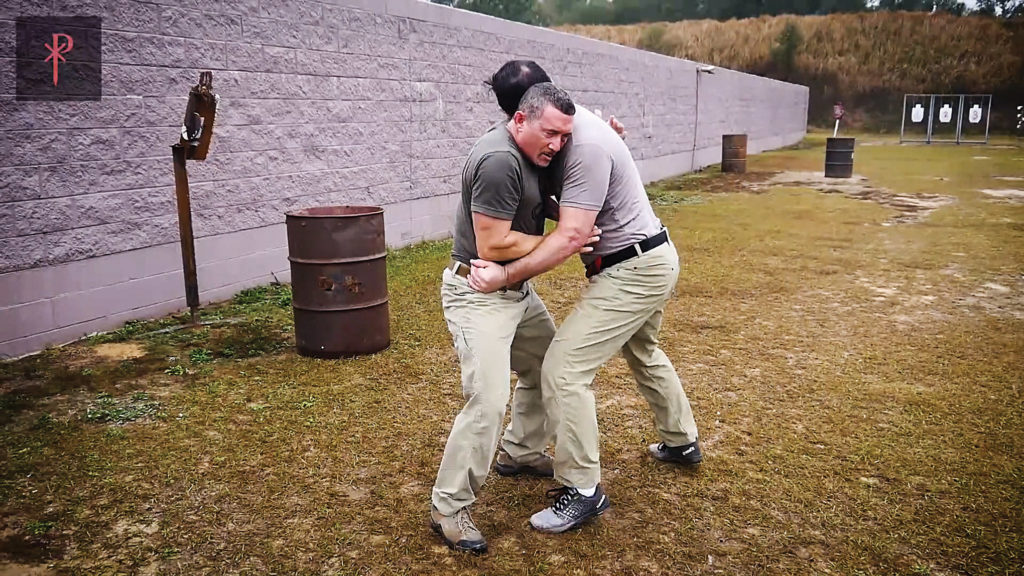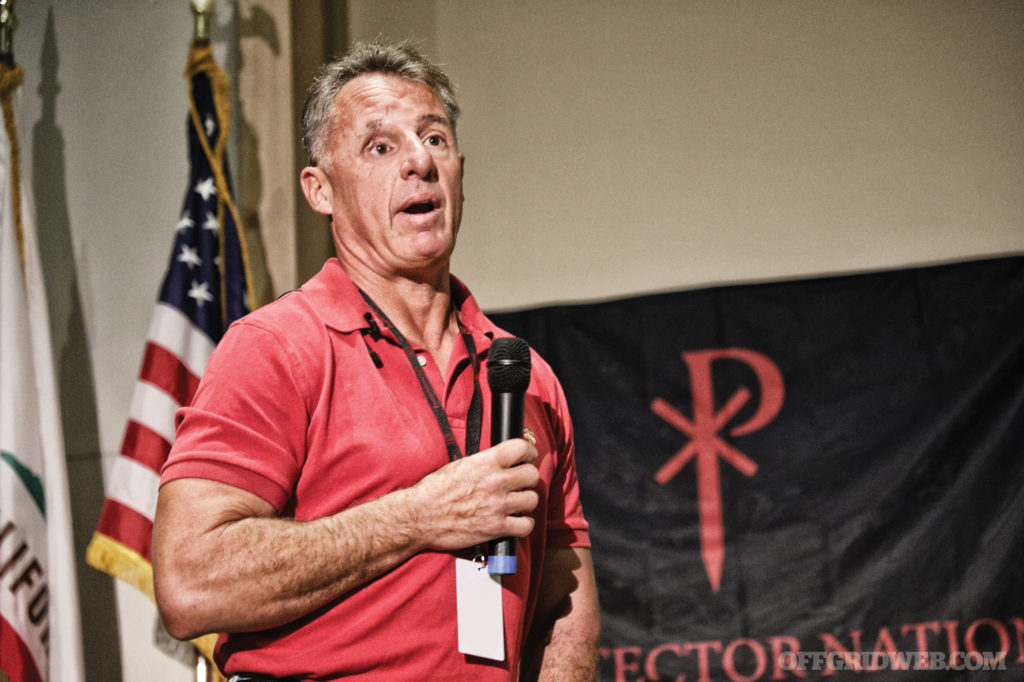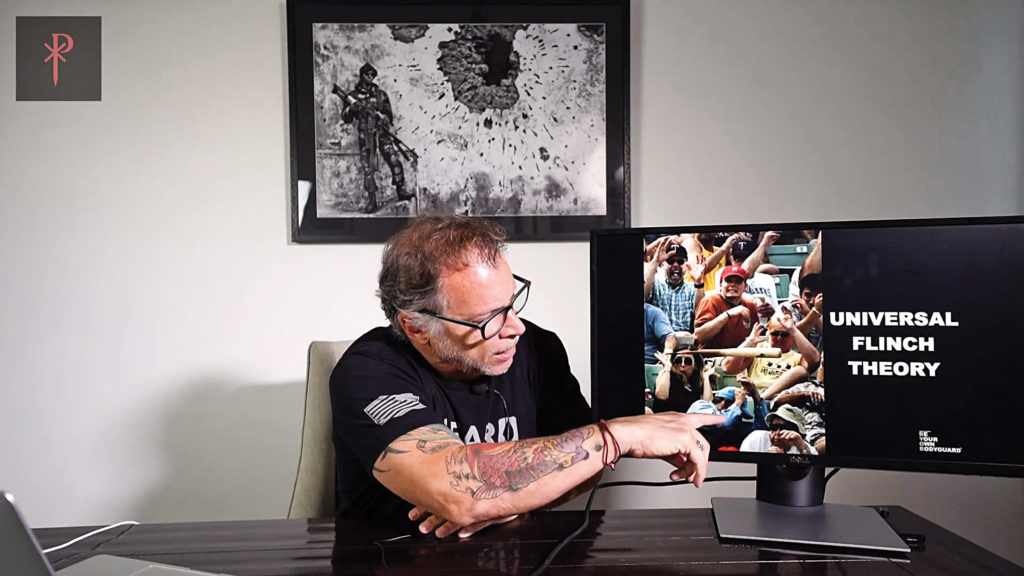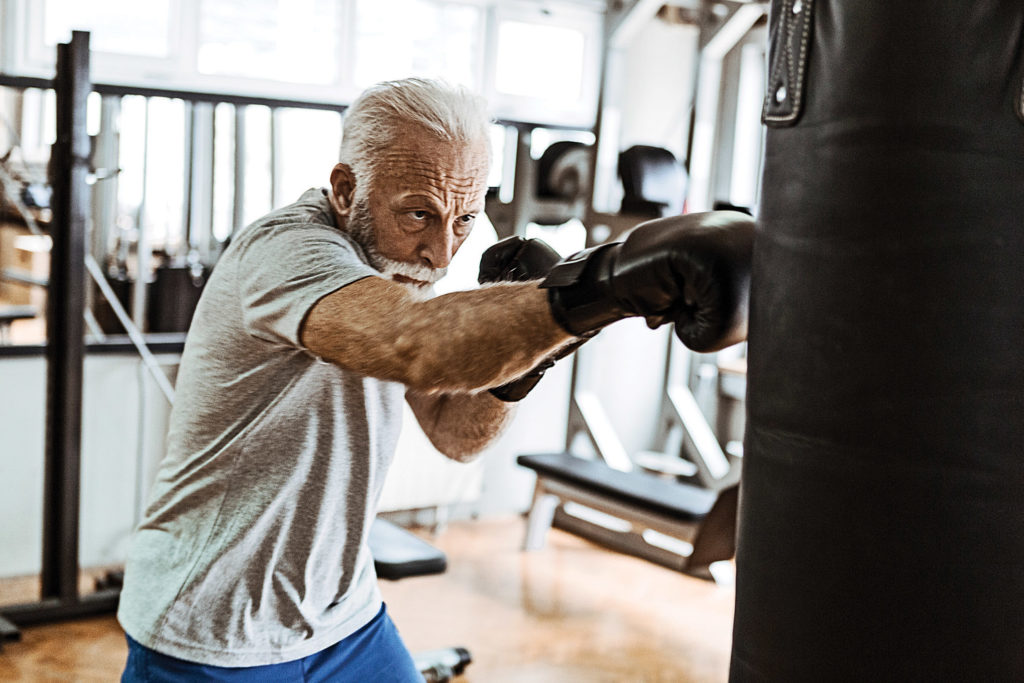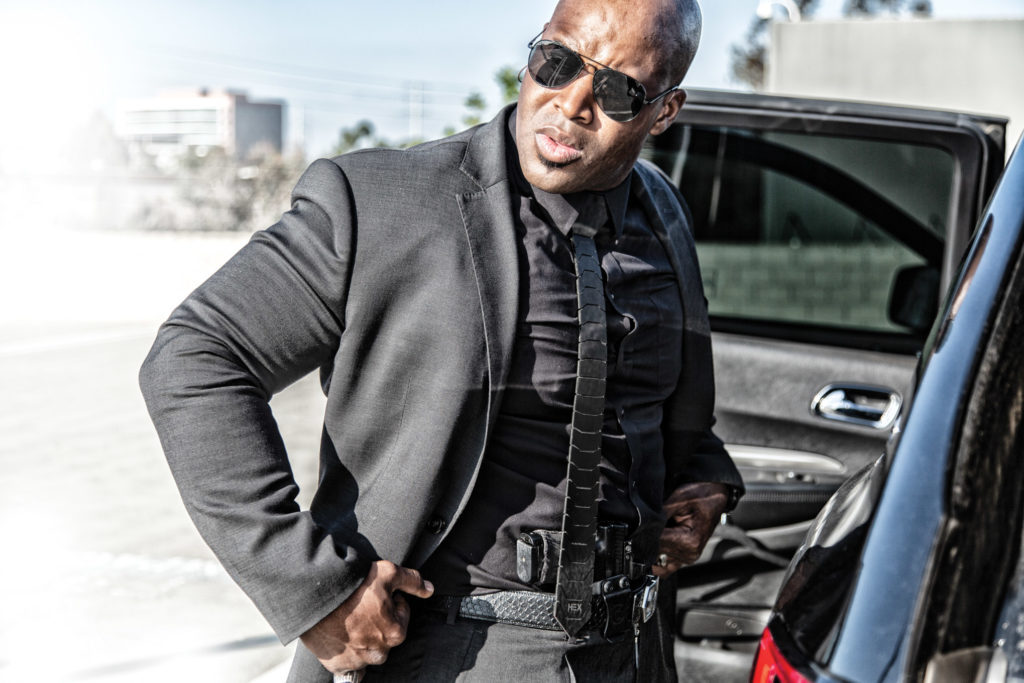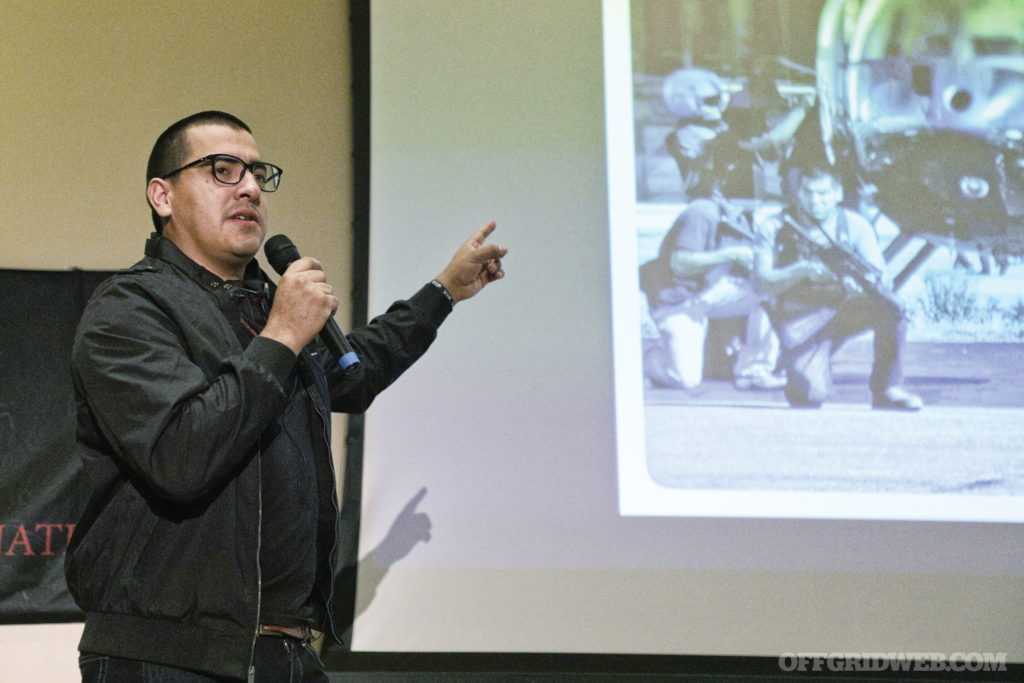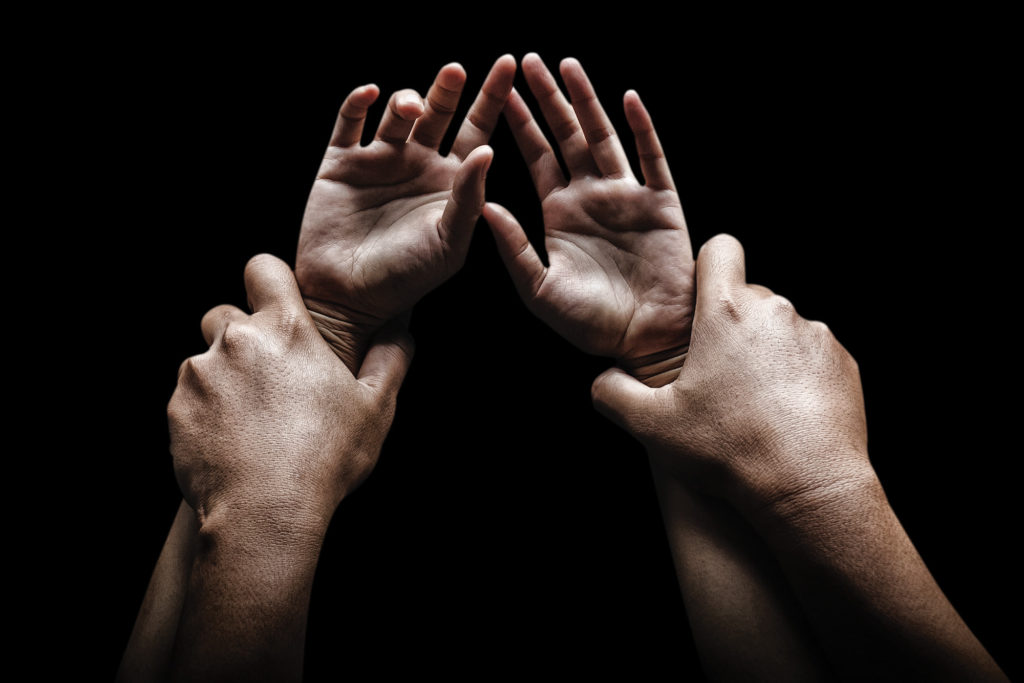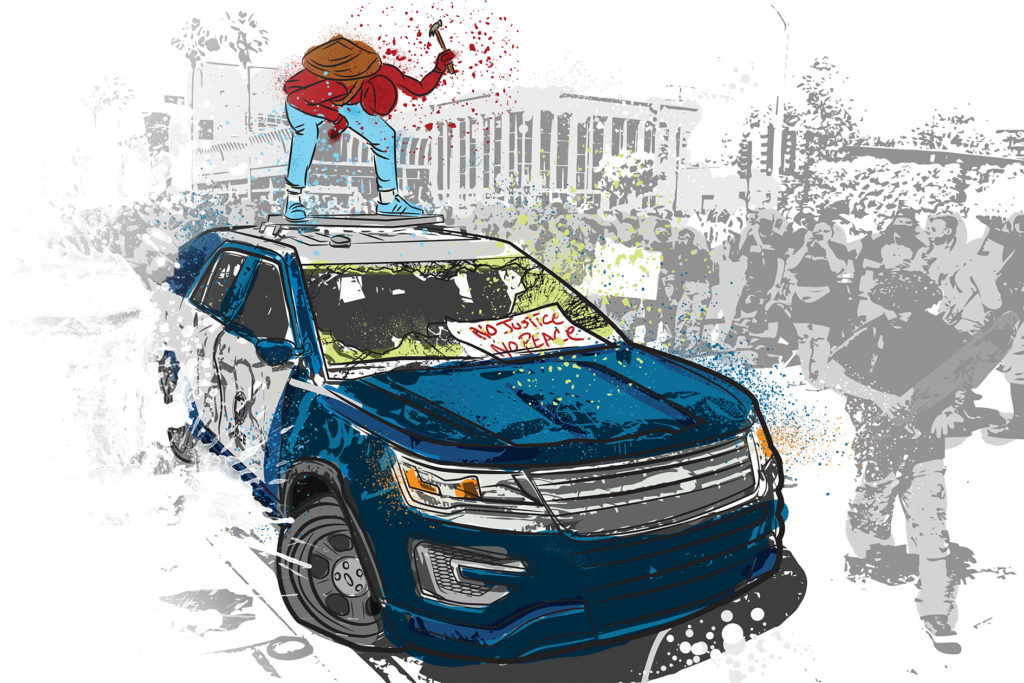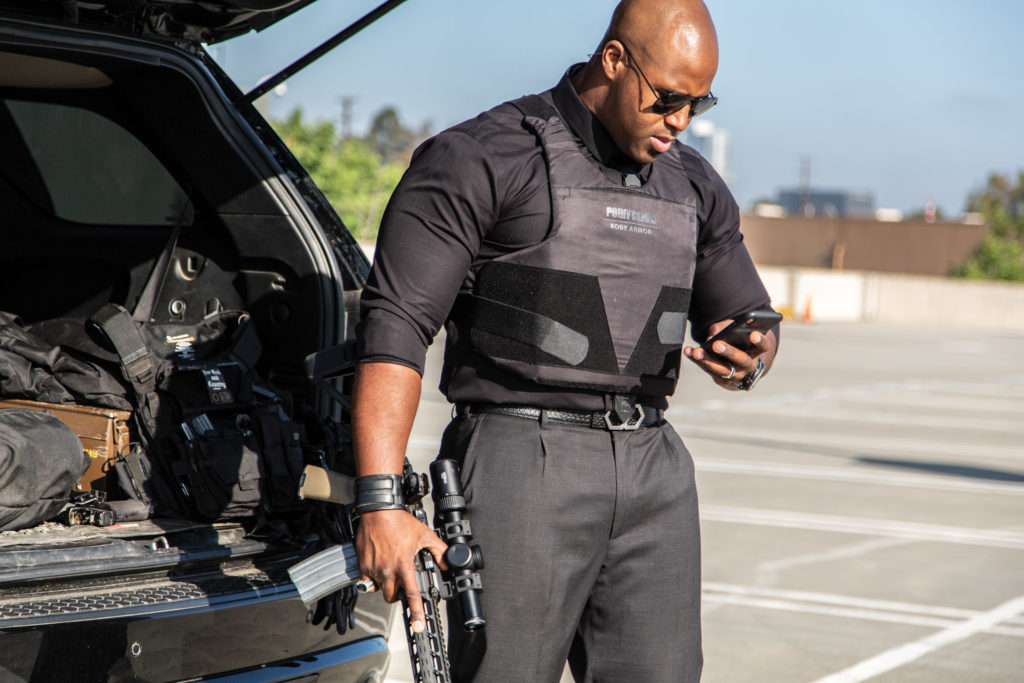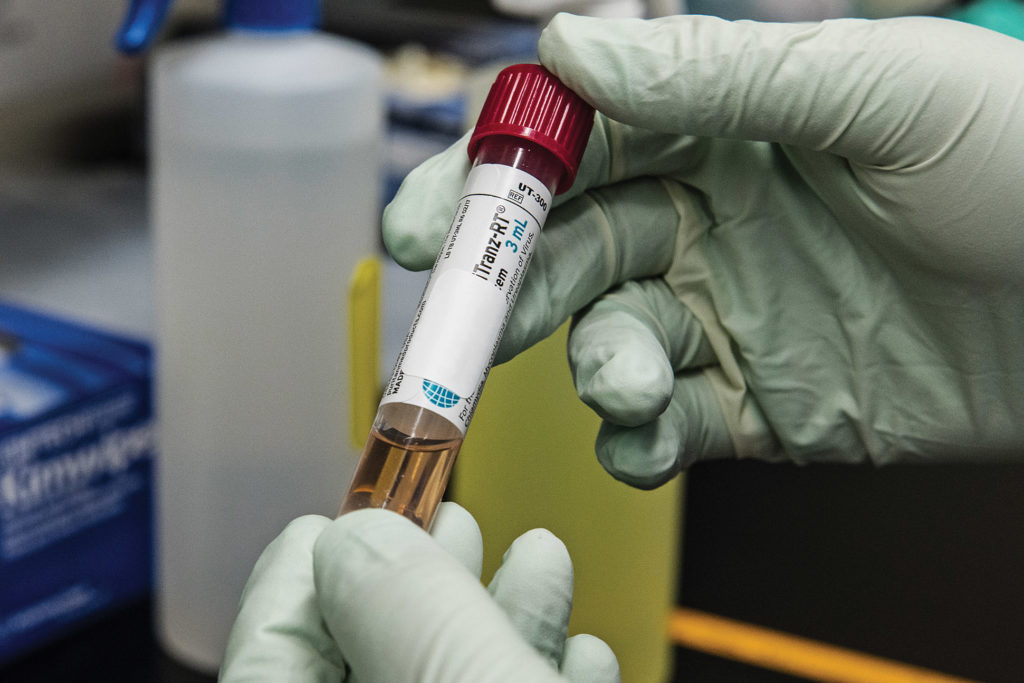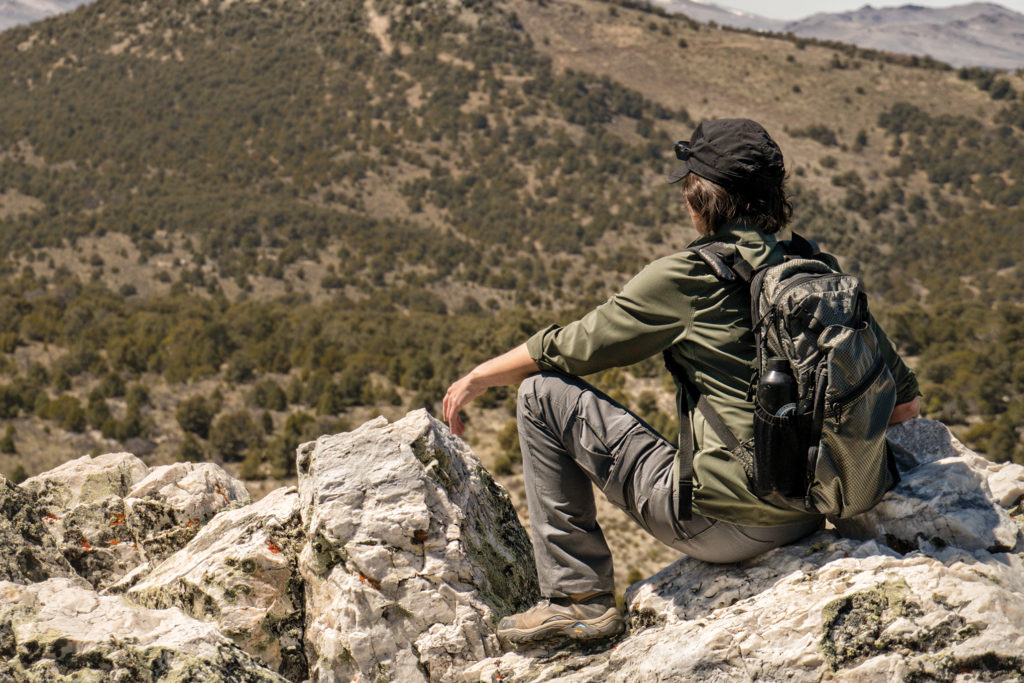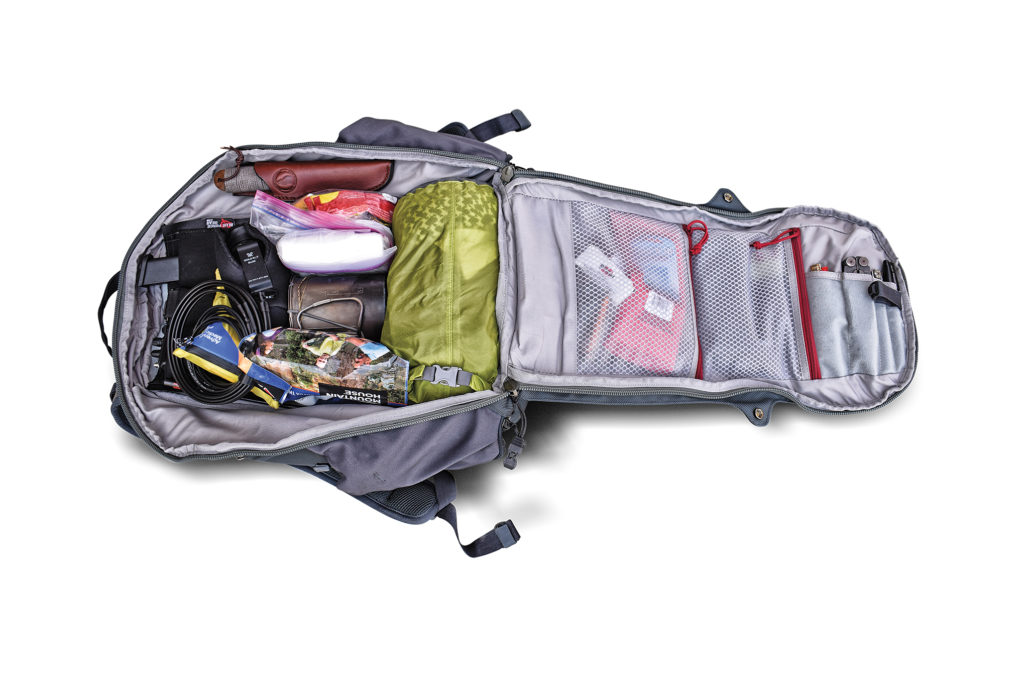How would you define yourself in a single word? Perhaps it’s a family title — mom, dad, husband, or wife. Or maybe it’s a professional title that represents your life’s work, such as soldier, officer, firefighter, or doctor. There’s one term that encompasses each of these titles, and likely applies to every one of our readers to some degree: protector. Whether you’re protecting yourself, your spouse and children, or total strangers in a first responder role, being a protector involves making a conscious decision to improve your knowledge and skills for the purpose of preventing harm. As with any other skill set, becoming a better protector involves training.
Byron Rodgers, who you may recognize from our Survivalist Spotlight interview last issue, has put a lot of thought into what it means to be a protector and how to spread this ethos to other like-minded people. This is what led him to form Protector Nation, an organization “dedicated to making the world a better place by making good people dangerous.” This also led to the formation of a conference where a selection of experienced protectors could share their knowledge, dubbed the Protector Symposium. You can read our recap of the inaugural 2019 Protector Symposium in Issue 37.
Given the COVID pandemic and the difficulty of hosting a large gathering in 2020, Rodgers decided to make the Protector Symposium 2.0 an “online global summit” that could be viewed on-demand from anywhere in the world. The list of presenters and topics caught our attention, so we plopped down on the couch with a laptop, headphones, coffee, and a notepad at the ready. Read on for our recap of each presentation, and the lessons we learned from them.
Jared Reston – Always Stay in the Fight
Background: Reston is a detective in the Department of Homeland Security/Gang Investigations unit at the Jacksonville Sheriff’s Office, as well as the assistant team leader and lead shooting instructor for the department’s SWAT team.
Lessons Learned: As the first guest speaker at the Protector Symposium 2.0, Reston set the tone for the event by recounting a horrific incident that changed his life forever.
Above: Reston’s story is a stark reminder that a fight isn’t necessarily won by the first person to pull the trigger. Even if you’re shot multiple times, never stop fighting and striving to win.
In 2008, while working off-duty as a security guard at a local mall, he responded to a call about a shoplifter. As he arrived on scene, the suspect took off running, and Reston chased him out of the mall on foot. After the suspect refused to stop, he deployed a Taser, but the weapon failed to fire. Reston quickly holstered the Taser and grabbed the suspect from behind, but he spun and broke free. During the struggle, he felt a sudden impact to his face. It wasn’t a punch — the man was shooting him with a Glock 21. Reston was struck by seven .45 ACP bullets in his lower jaw, chest, flank, arm, buttock, and thigh as he tumbled to the ground.
Rather than allowing himself to be overwhelmed by this massive trauma, Reston rolled to his knees and drew his gun. He proceeded to shoot the suspect seven times — four to the body as he lunged upward at him, and three with the muzzle of his pistol pressed into the man’s head. Reston’s partner caught up moments later, ensured the suspect was no longer a threat, and called for rescue.
Reston’s overarching message was clear: Stay in the fight, no matter what. Simply staying alive isn’t enough — “Going home safe isn’t the goal. The goal is to win.” Reston didn’t deny that the aftermath was agonizing, but he said that in the moment, pain barely even registered. “Speaking from experience, getting shot doesn’t hurt. The human body is very unimpressed with bullets, especially pistol bullets … Your body does amazing things to keep you in the fight.” He says his desire to win and his ability to revert to his training were instrumental to his survival.
This presentation reinforced the power of a determined mindset, as well as realistic self-defense training. As Reston put it, “There’s a lot of luck in gunfights, but luck favors the prepared. Put the work in on the front end and make yourself hard to kill.”
Ed Calderon – Embrace the Unconventional
Background: Ed Calderon spent 12 years working in counter-narcotics, organized crime investigation, and public safety in the northern border region of Mexico. He now uses that experience to teach students realistic self-defense and survival skills.
URL: edsmanifesto.com
Above: What’s the difference between a Phillips screwdriver and an icepick? Calderon says both can be effective as weapons, but the screwdriver is considered a harmless tool.
Lessons Learned: We’ve trained under Calderon several times now, and we never fail to learn something new and valuable each time. He introduced his presentation with a quote from legendary Japanese swordsman Miyamoto Musashi: “Know your enemy, know his sword.” This may sound trite, but it holds a meaning that’s deeper than you might think — to truly know your enemy, you must experience his weapons and techniques firsthand. Do you understand the effectiveness of a rusty screwdriver as a killing implement, and have you considered how it might be wielded? As Calderon puts it, “The unconventional is only unknown to the conventional.”
This acceptance of the unconventional applies directly to weapons — see “Sharp Edges & Dirty Tricks” from Issue 36 for more details — but also goes far beyond that realm. Calderon explained how travelers can break from tourist norms to become safer while visiting foreign countries. The first step is research. For example, before visiting Mexico, you should look up photos and videos of cartel abductions and assaults, and learn to recognize how these criminals differ from established law enforcement. (If a cop in Mexico is carrying an AK-47, he’s probably not a cop.) Case the area you’ll be visiting remotely through Google Street View or other virtual means, and establish a baseline of typical people, vehicles, and businesses. The destination’s “normal” will certainly differ from your hometown’s “normal,” so this will let you know what is acceptable and what isn’t. Establish entry and exit plans for everywhere you go, and don’t forget to keep an eye on the locals nearby — sudden changes in their behavior can provide an early warning for danger.
Gear selection should also be approached unconventionally. Instead of brightly colored tourist apparel or tactical clothing marketed to the gray man demographic, Calderon says “hobo tactical” is often a better choice — well-worn jeans, a plain T-shirt, an old jacket or hoodie, and a cloth satchel or cheap backpack. He says that even in the United States, $40 can get you everything you need for a 72-hour survival pack. Honey, granola, peanut butter, and instant coffee powder make a calorie-dense survival food; gauze, duct tape, and ratchet straps form an improvised trauma kit.
Don’t dehumanize or underestimate your enemy’s skills, and remember that he won’t always think or act like you do. Calderon says, “The only thing that separates you from them is intention. Our intention is to be protectors; theirs is to be predators.” Study dangerous areas and individuals carefully, and be ready to adapt quickly.
More From Ed Calderon:
- Shedding Light on Kidnapping and Abduction Trends.
- Ed Calderon and Ernest Emerson team up to teach Surviving the Killzone.
- Sharp Edges and Dirty Tricks: Ed Calderon Weaponology Class Recap.
- Improvised Weapons with Ed Calderon.
- Ed Calderon on the Gray Man Mindset.
Yousef Badou – Hunt for Anomalies
Background: Badou grew up in Kuwait, and has childhood memories of Iraqi tanks rolling through the streets. At age 19, he enlisted in the U.S. Marine Corps and went on to teach behavioral analysis at the Marine Combat Hunter program.
URL: emergencedisrupt.com
Above: Even without hearing the conversation, Badou said it’s not hard to see what’s going on in this photo. A pointed finger can indicate aggression or interest; the woman’s uncomfortable smile and leaned-back posture clearly show that the interest is one-sided.
Lessons Learned: Threat identification is Badou’s specialty, and it’s a skill he firmly believes every man, woman, and child needs to understand in order to save lives. The foundation of his threat identification system is the hunter mindset. No matter how much we distance ourselves from nature, humans are a thinking apex predator. We don’t just wait for prey to randomly stumble upon us — we pro-actively search for it or attract it using our resources and tools. Our intelligence and front-focused, pattern-oriented vision attest to this. Just as we hunt for prey, we can hunt for predators.
Badou uses a simple formula to identify potential threats: baseline plus anomaly equal decision. A baseline is the current norm, and it varies dramatically from place to place or person to person. To establish a baseline at a location, sit for 30 minutes and take notes on anything you observe; for an individual, pay close attention to verbal and written communication, as well as kinesics (expressions, gestures, movement, posture, clothing, and so on). An anomaly is anything that breaks from this baseline, and it should lead immediately to a decision. It’s important to note that your decision may change as multiple anomalies stack up. There are many reasons someone might be sweating, but if they’re also glancing around the room repeatedly and exhibiting pacifying behavior, such as rubbing their neck or arms, it’s probably a cause for concern. Badou says three behavioral indicators should be enough to make a decision — “Three is good enough for me.”
Don’t let denial impede your rapid decision-making process. “Denial is the biggest killer,” says Badou. When we make a non-standard observation, our first instinct is to explain it as something normal we’ve experienced previously — the popping noises you just heard might be interpreted as fireworks, even if they’re actually gunshots. Fight this urge, and make a decision as quickly as possible. Staring in disbelief or waiting for others to reach the same conclusion burns priceless seconds during an unfolding disaster.
Even though anomalies may not be an indicator of a direct threat, you should always be hunting for them during your daily routine. We’re surrounded by human behavior all day every day, so get out there and put your observational and analytical skills into practice.
More from Yousef Badou
- Predatory Premonition: An Interview with Yousef Badou.
- Yousef Badou on the warning signs of Human Trafficking.
Craig Douglas – Learn the Reality of CQC
Background: Douglas retired from law enforcement after 21 years, most of which were spent working in SWAT and Narcotics (including two years of undercover work). He has been teaching close-combat and entangled shooting skills since 2003.
URL: shivworks.com
Above: Douglas demonstrates the underhook technique. By closing the gap and hooking his arms under the opponent’s, he quickly gains control of the opponent’s limbs, preventing him from accessing a weapon on his waistline.
Lessons Learned: How many times have you stood at the range and fired rounds into motionless cardboard? Conversely, how many times have you struggled to break free from the grip of an opponent who’s trying to stab or choke you, or felt the helplessness of having a (simulated) gun torn from your hands before you can use it? The former scenario is comfortable; the latter is humbling, and it’s much closer to what you might experience in a street fight. Douglas experienced many close-range confrontations during his time in law enforcement; he was robbed nine times while working undercover, often sitting in a car next to an armed criminal. This led him to the realization that conventional tactical training doesn’t adequately cover close-quarters combat (CQC) — that is, fights that happen from “5 feet and in.”
Douglas condensed his Extreme Close-Quarters Concepts (ECQC) course into this abbreviated video class, which was filmed at a shooting range with an assistant instructor to demonstrate techniques. Although this class incorporates firearms, all of its skills are founded on an “operating system” of empty-hand skills rooted in ancient Greco-Roman wrestling. Much like a computer’s OS, if these empty hand skills fail, the rest of the system also crashes. The operating system’s three principles — pressure, posture, and position — allow you to use your weapon effectively while blocking your opponent from doing the same.
Whether there’s a weapon in play or not, there are two constants during a “clinch” (i.e. an entangled physical altercation). First, always control the opponent’s limbs, because “everything is always a drag race to get to a weapon.” Second, always take the inside position, since this allows you to break the enemy’s posture and stop their arms from reaching for a weapon. There’s a fine line between lingering in the clinch too long and backpedaling too early — both are potentially dangerous. When the time comes to break contact, always try to exit behind the opponent. Close-range shooting techniques, such as thumb pectoral index and partial extension, were covered as well. Check our Final Weapon column in Issue 39 for more details on the Shivworks Close Contact Handgun curriculum.
Douglas made it clear that knowing how to grapple and control an opponent up close is a critical element of any self-defense system, since most real-world confrontations happen at conversational distance.
Mike Pannone – Practice Broad-Spectrum Preparedness
Background: Pannone is a retired member of U.S. Marine Force Reconnaissance, Army Special Forces (Green Beret), and 1st SFOD-D (Delta Force). He’s also a USPSA Master ranked pistol shooter in three divisions.
URL: ctt-solutions.com
Above: If you’re traveling domestically or abroad, it’s critical to establish emergency plans and discuss them with your family. Pannone says these plans should include a means of identifying and locating each person, as well as a safe rally point for anyone who gets separated from the group.
Lessons Learned: “I’m not a theory guy. On the ground in a combat environment, theory gets you hurt. I built my business on practical knowledge and experience,” says Pannone. His presentation took a pragmatic approach to general emergency preparedness, covering a wide variety of topics that apply to our everyday lives. The first topic addressed was first aid, a skill all of us will inevitably need. This includes having the equipment to stabilize minor and major wounds until help arrives, as well as the training to employ those tools confidently. All members of the family should take an emergency medical course, and should practice these perishable skills frequently.
Next, Pannone spoke about firearms for personal defense. He made it clear that equipment is always secondary to the shooter’s skill level — “I’m not nearly as concerned with the firearm someone has than with the level of training they’ve sought. The firearm is just a delivery system for that practice.” If you carry daily, Pannone says you should be doing some form of live-fire training every two weeks at a minimum, and dry-fire training more frequently than that.
Mindset is another critical tenet of well-rounded preparedness. Each of us must ask ourselves, “Can I use this [weapon] for what it’s intended for? In extremis, that’s the extinguishing of human life. Am I emotionally capable of doing that?” Take this question very seriously, and don’t allow your answer to be clouded by macho overconfidence. Pannone says, “The reality of violence, if you’re not emotionally prepared for it, will stun you.” Once you’ve crossed that mental threshold, move on and focus on the mechanical aspects of training.
The remainder of the presentation dealt with personal and family security strategy in various contexts — inside the home, outside the home, in or around a vehicle, and during domestic or overseas travel. The common thread is to formulate simple plans for each scenario — they should be specific to your needs, not prefabricated by someone else — and make sure all members of your family know the details. If an incident occurs, you won’t have much thinking to do. Just execute the plan.
Pannone closed with a memorable statement on the value of preparedness: “It’s not paranoia. Paranoia is fear-based. It’s professional vigilance. That’s proactive awareness. There is no downside to being prepared. None!”
Tony Blauer – Understand the Physiology of Sudden Violence
Background: Blauer has four decades of experience working in the martial arts, self-defense, and combatives industries. He bases his training on a foundation of natural human physiology and biomechanics.
URL: blauerspear.com
Above: This image of spectators reacting to an airborne baseball bat served as a perfect demonstration of Blauer’s Universal Flinch Theory. While we can’t control our innate impulse to flinch, we can control what happens immediately afterward.
Lessons Learned: When sudden, unanticipated violence occurs, humans react with a startle response — we flinch. Muscles contract, hands and arms move to protect the head, and we recoil away from the perceived threat. Blauer calls this our “organic airbag,” since it’s hardwired to protect us, and he says that even Tier 1 operators and world-renowned fighters are equally affected by it. For an example of this, he showed a video clip of interviewer Freddie Starr playing a prank on Muhammad Ali. Even Ali, whose fighting qualifications are undeniable, experienced the startle response. Although we can’t stop the flinch, Blauer says we can and should change what we do immediately after — “Weaponize the startle response.”
Blauer explained that three types of stimuli can cause flinches: visual, tactile, and auditory. Research shows the latter leads to the fastest response, so this is a good reminder to take out those earbuds and keep your hearing unobstructed in potentially dangerous settings. There are also three types of flinch response, which were demonstrated using a famous photo of a baseball bat flying into the bleachers. Some people turn their heads away (oblique flinch), some extend only one arm (cross-extensor reflex), and some take the threat head-on, leaning back with both arms extended. Blauer says the latter is preferable — when hands come up to protect the head, they can be immediately extended into a push or punch. You should then “get off the X” and distance yourself from the danger as soon as possible.
In the second half of his presentation, Blauer touched on a topic that often comes into play immediately after the startle response: fear. He uses the acronym False Expectations Appearing Real. In the heat of the moment, humans tend to visualize the worst-case failure scenario, not the best-case successful outcome. Blauer says you must learn to escape the fear loop and get back in the fight by remembering what it would cost if you didn’t fight — death, dismemberment, paralysis, coma, or your loved ones dying in your arms. “Fear can immobilize you or it can supercharge you.”
Byron Rodgers – Live as a Protector
Background: Rodgers is a U.S. Marine infantryman (retired) who has spent the last decade working in the private security industry, and has run teams of agents in more than 60 countries. He’s the founder of Protector Nation and CEO of Bravo Research Group.
URL: byronrodgers.com
Above: Rodgers says a protector should be trained and capable of inflicting harm, but discerning enough to do so only when it’s necessary. Work to develop a well-rounded set of soft and hard skills.
Lessons Learned: As the last speaker of Protector Symposium 2.0, Rodgers opened his segment with a simple mission statement: “We need to teach good people to be more willing, capable, and prepared to deal with evil.” He says that self-protection is an inalienable right, and a skill that matters to absolutely everyone — you are a first responder, and there are people counting on you whether you like it or not. Despite society’s prevailing opinion that violence is to be avoided at all costs, experience tells us that sometimes violence can only be stopped by greater violence. For evidence of this fact, watch any confrontation where a victim cowers and submits, and compare it to one where they fight back explosively. Knowing this, good people who wish to stop violence must become dangerous.
To be dangerous is to be capable of inflicting harm. As psychologist Jordan Peterson says, “A harmless man is not a good man. A good man is a very dangerous man who has that under voluntary control.” Much like a cornered animal, anyone can be dangerous under the right circumstances, but this power is amplified for the select few who are willing and prepared to use it for good. We should each understand the parts of ourselves that might make us terrible, and learn to spot those same characteristics in others. While discussing politicians’ inability to recognize unthinkable war crimes committed in the Bosnian War, Dr. Peterson said, “If you don’t have sufficient imagination for evil, then anyone who does wins … Unless you can think the way an evil person thinks, they’ll defeat you. They’ll go places you can’t even imagine.”
In addition to understanding the enemy, Rodgers says we must remember that failure to plan is planning to fail. We must be prepared. This means training in hard skills, such as first aid, combatives (with and without weapons), and what he calls “renaissance skills” — abilities that make us well-rounded, such as lockpicking, evasive driving, and land navigation. Soft skills, such as social engineering, profiling, and situational awareness, are equally important and more frequently used in daily life.
Being a protector isn’t easy, but it’s necessary in the imperfect world we live in. Rodgers likens protectors to antibodies — the world’s immune system for counteracting evil and maintaining a state of balance. History proves that violence is a fact of life, so we can either deny it and stake our hope on “it’ll never happen to me,” or accept it and be ready to meet it headfirst.
Although the Protector Symposium 2.0 live event is over, you can still access the full-length videos from each presenter. For more info, go to protectorsymposium.com.
Related Posts
The post Protector Symposium 2020: Protect What Matters Most appeared first on RECOIL OFFGRID.






